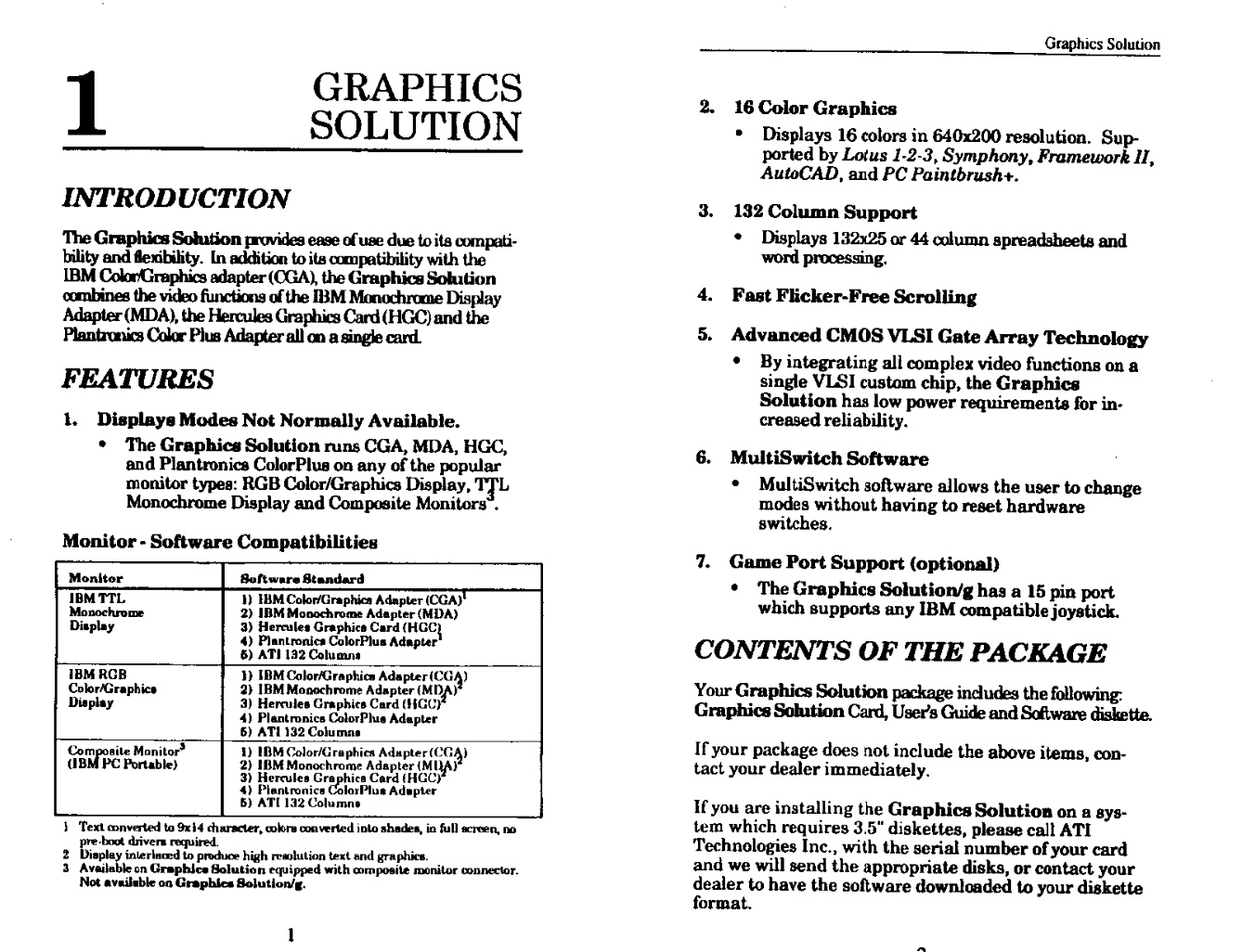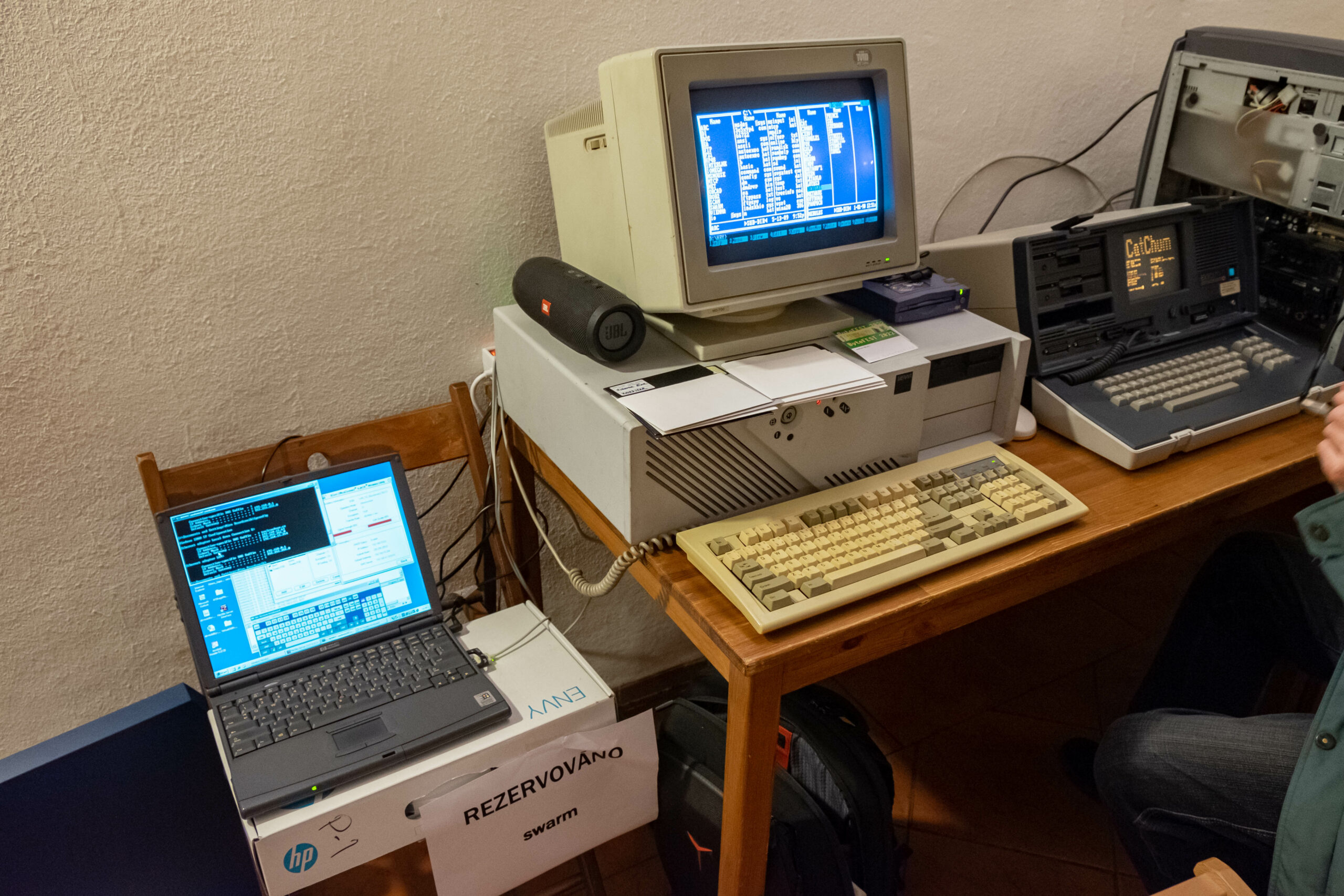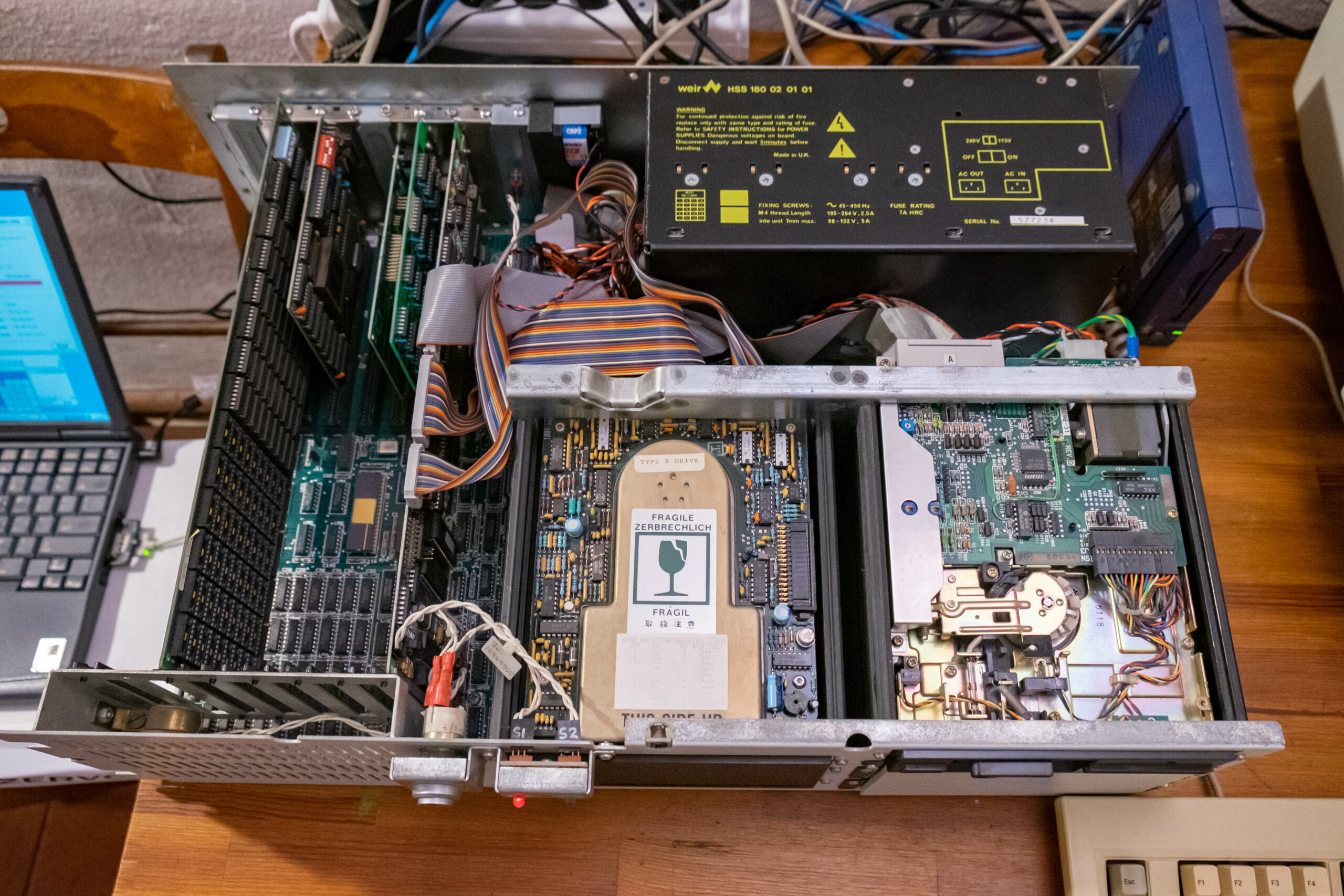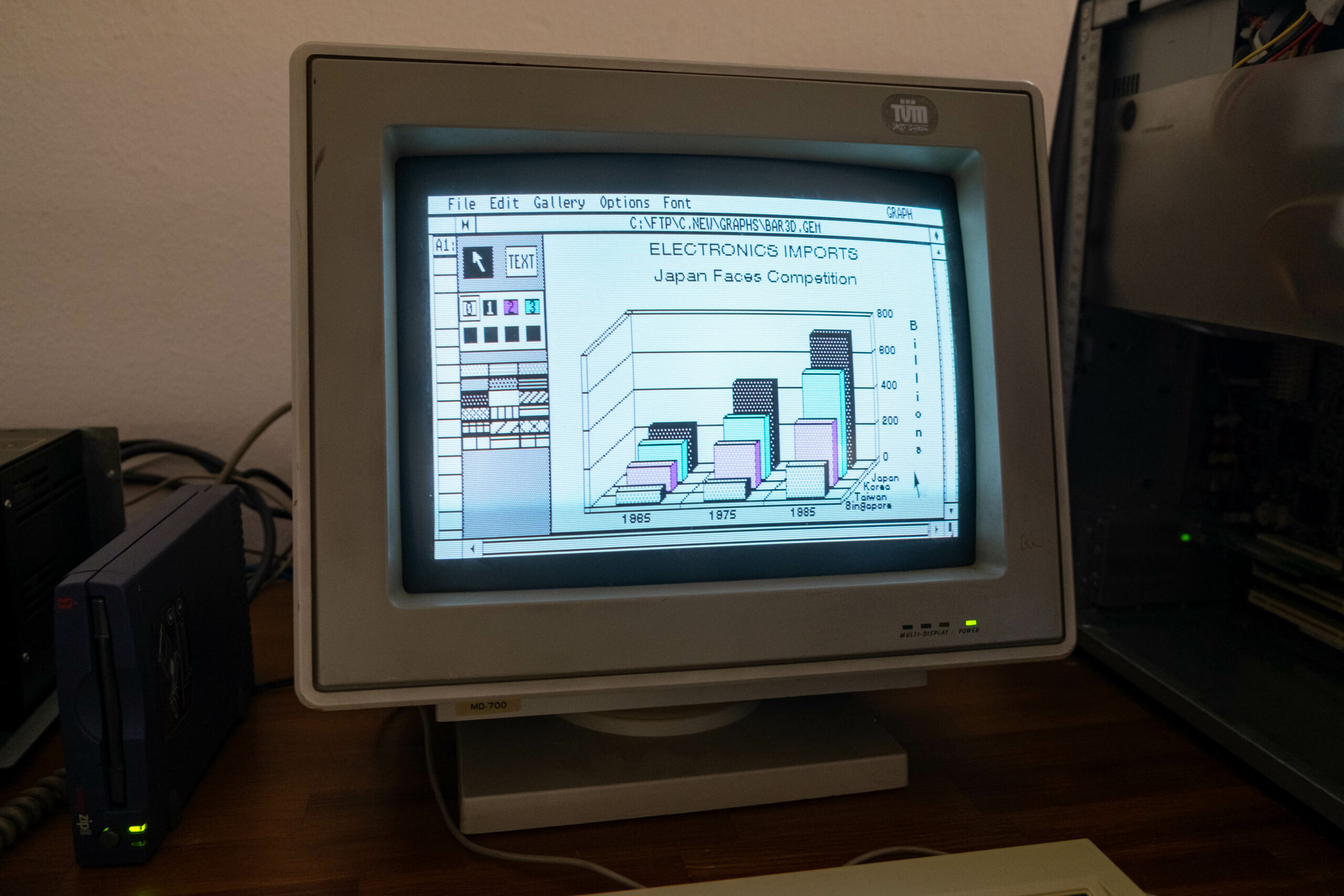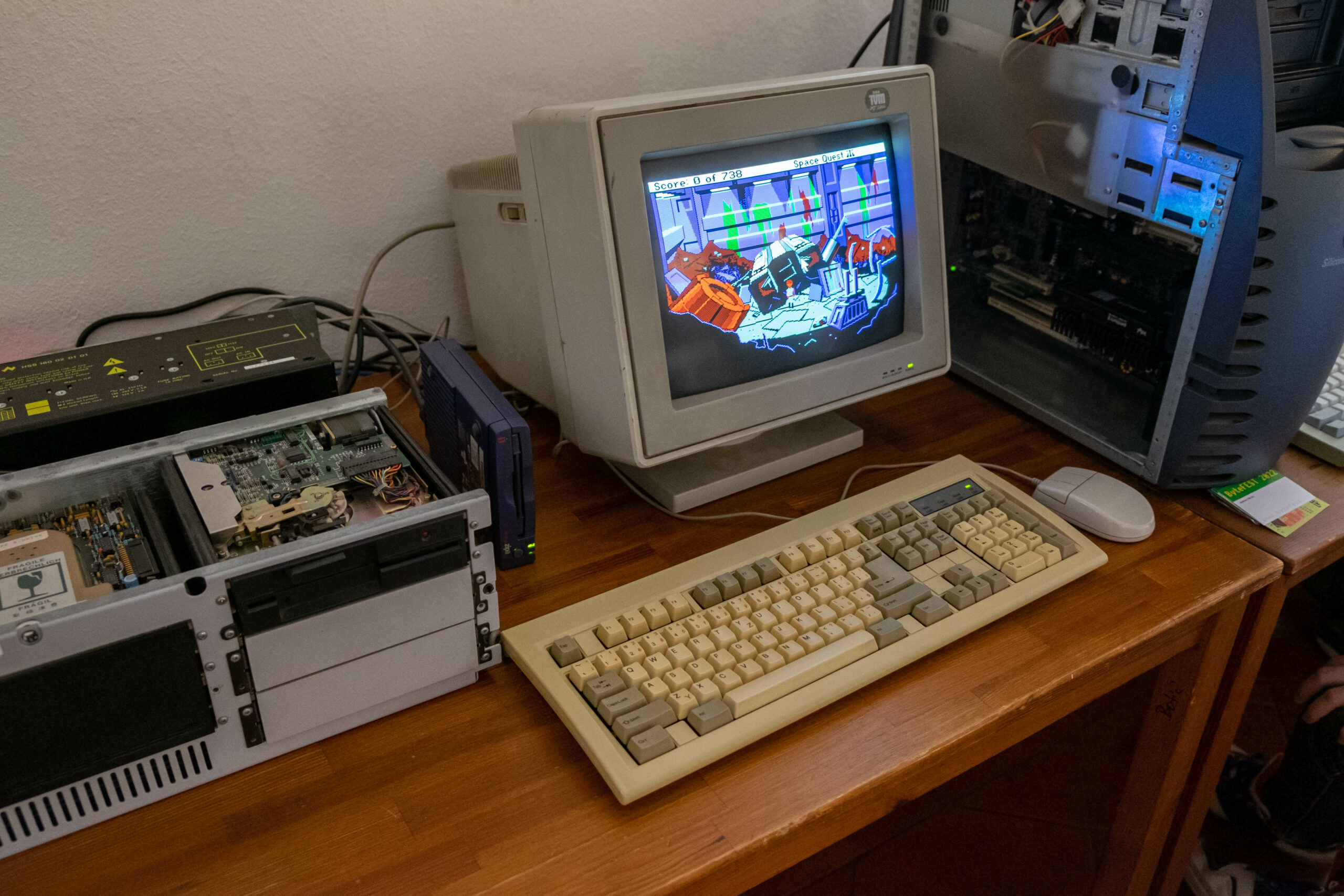“SuperCGA” and ATI Graphics Solution and GEM Desktop
8bit guy published a video about SuperCGA cards, which reminded me that this was a topic a recently dug into. I’ve never really worked with CGA/EGA monitors. When we had a computer at home for the first time in 1989, it was an IBM PS/2 Model 20 borrowed from dad’s office. That computer already had an on-board graphics chip that worked with VGA monitors. One year later, my family decided to buy our own computer. It was a 286 clone with an SVGA graphics card and an SVGA monitor able to show 1024×768 (interlaced though).
During the Bytefest (a vintage computer show in Czech Republic), one of the computers I brought there was an early Vienna 286. A friend of mine promised that he would have brought an EGA monitor, so I could try a card I bought just for this purpose – a Trident 8800CS (512KB). This Trident has both VGA and RGBI/TTL (CGA/EGA) outputs and can be switched to act like different IBM graphics chips. Sadly, the Trident card was ignoring the switches and always used VGA timing. It sent the signal always to both outputs but my EGA monitor was not able to sync 640×480 with 31kHz h-sync (as expected). We brought an oscilloscope, even made some modifications to the card, but nothing helped. When I asked in some groups, the only answer I got was that somebody tried the same thing on his Trident 8800CS with the same result.
Anyway, I also had the original ATI Graphics Solution card that was sold with the computer somewhere in 1987, so at least I had something else to play with. This is a very neat card. It has 64KB of video RAM and supports both CGA and Hercules modes. As I shown in the past, it even supports CGA modes on Hercules/MDA monitors using clever timing tricks. The card was used in the Hercules mode for the whole its life as the machine served in an electrical engineering lab for designing electric circuits. This was finally the time for me to switch it into the native CGA mode.
Seeing the CGA modes was not so interesting for me. However, the card supports also non-standard modes that can utilize the whole memory which is four times of what the IBM CGA has. The obvious choice was something that supports Plantronics ColorPlus which ATI supported like many other CGA-clone vendors. Yes, I tried Planet-X3 and Space Quest 3 in 320×200 with 16 colors. However, Planet-X3 is a modern game, and the Space Quest 3 uses a modern video driver to support this card (the original game did not have it). I was more interested in productivity apps. After seeing that GEM Desktop (sort of a Windows competitor) provides support for ColorPlus, I installed the whole bundle.
At the beginning, everything looked just like with CGA – black & white only. This was because the desktop environment does not use more colors there. On the other side, if I moved the mouse fast enough, it was visible that sometimes the cursor was ping instead of black for a moment. Thus, I knew that we were actually in the 4-color mode. After installing office programs, I was finally able to see all four colors in 640×200. Quickly after that I realized that among desktop accessories, there is a calculator that uses magenta as a background color. Anyway, I am happy that I also tried these office/productivity apps. From my point of view, they are gimmick. They look like they support everything but when you try to do something, you get the feeling that they were designed more to present the functionality of the desktop environment.
The ColorPlus had just 32KB of video RAM and my ATI Graphics Solution has 64KB, so it should be able to drive 640×200 in full 16 colors. I’ve checked the user guide for the card and indeed this mode was mentioned there. ATI manual says that there is support for it in AutoCAD, PC Paintbrush+, Lotus 1-2-3, Symphony and Framework II. I installed the PC Paintbrush+ as a bitmap editor can benefit the most from such a mode. The support for this card was built in the software so no extra drivers were needed. After selecting the mode, I was able to get the best out of a CGA 200-line monitor. What I really like, the bundled ATI driver disk contains a small example program to enable this mode (including its source code), so programmers could modify their own programs to get more than what a standard CGA offered.
